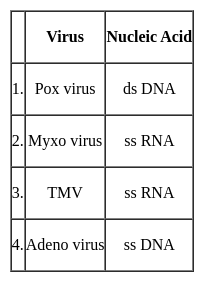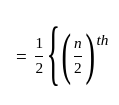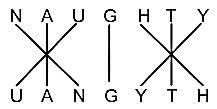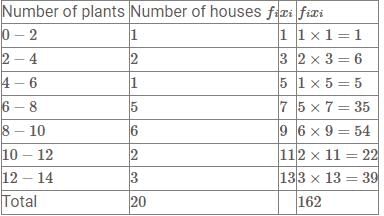CSIR NET Life Sciences Mock Test - 10 - UGC NET MCQ
30 Questions MCQ Test CSIR NET Exam Mock Test Series 2025 - CSIR NET Life Sciences Mock Test - 10
Surendra divided some amount among his wife, son and daughter such that the amount received by his wife and his son in the ratio  and his son and his daughter in the ratio
and his son and his daughter in the ratio  . If his daughter received
. If his daughter received  more than son, then what amount Surendra divided among them?
more than son, then what amount Surendra divided among them?
 and his son and his daughter in the ratio
and his son and his daughter in the ratio  . If his daughter received
. If his daughter received  more than son, then what amount Surendra divided among them?
more than son, then what amount Surendra divided among them?X and Y are the two alloys which were made by mixing Zinc and Copper in the ratio 1:3 and 2: 5 respectively. If 120 grams of alloy X ,91 grams of alloy Y and 34 gram pure Zinc are melted and mixed to form another alloy Z, what is the ratio of Zinc and Copper in the new alloy Z?
Marks obtained by a student in 7 subjects are as follows 90, 66, 70, 82, 86, 78, 74 in these obtained marks 78 is:
Everybody in a room shakehands with everybody else. The total number of hand shakes is 66. The total number of persons in the room is:
In a code language, ‘SERVICE’ is written as ‘RESVECI’. How will ‘NAUGHTY’ be written as in that language?
Which letter from the options will replace the question mark (?) in the following series?
D, H, M, Q, V, ?
If (10a3 + 4b3) : (11a3 − 15b3) = 7:5, then (3a + 5b):(9a − 2b) = ?
A survey was conducted by a group of students as a part of their environment awareness programme, in which they collected the following data regarding the number of plants in  houses in a locality. Find the mean number of plants per house.
houses in a locality. Find the mean number of plants per house.

Which of the following barriers does not come under innate immunity?
Which statement best describes the pKa of amino groups in proteins?
An intermediate of the citric acid cycle that undergoes reductive amination with glutamine as nitrogen donor is ____________?
Mark the one, which is NOT the characteristics of the guard cell?
The amino acid with pKa closest to physiological pH is:
Which of the following is not related to embryo culture?
In the human female, the fertilized eggs get implanted in the uterus:
What would be the number of chromosomes of the aleurone cells of a plant with 42 chromosomes in its roots tip cells?
Under a given renaturing condition E. coli DNA reassociates with a Cot ½ of 4.0 and an unknown DNA sample with a Cot ½ of 283. The complexity of this unknown DNA will be
Science that deals with the relationships between living organisms with their physical environment and with each other is called:
Which of the following is wrongly matched in the given table:

Anaerobic respiration occurs in the absence of ________.
In the question given below, there are two statements marked as Assertion (A) and Reason (R). Mark your answer as per the codes provided below:
Assertion: The direction of movement of organic solutes in the phloem is bidirectional.
Reason: The transportation depends on variability of source-sink relationship.
Which pair/s is/are Uvr component molecules scanning the DNA during nucleotide excision repair?
1. UvrB, UvrC
2. UvrB, UvrA
3. UvrD, UvrA
4. UvrA, UvrB
Which of the following is also known as the removal of one or more bases from the nucleotide chain?





 and his Son received
and his Son received 





 Rs
Rs 





 term when, n is odd
term when, n is odd term
term  term }, when n is even
term }, when n is even
 th term = 78
th term = 78













 .
.
 for each interval is calculated as follows:
for each interval is calculated as follows:
 can be calculated as follows:
can be calculated as follows:



















